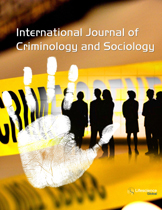ijcs
|
|
Abstract: This article is a case study that examines the three-pronged approach (TPA) of the Independent Commission against Corruption (ICAC) in Hong Kong. Its functions and operations on anti-corruption matters will be assessed from an institution-oriented perspective. It is suggested that for decades, the TPA had been misunderstood in its role as a conventional investigation, prevention and education tool and that such misconceptions may lead to a failure in anti-corruption institutional reform. By better understanding the TPA and its simplistic traits of deterrence and trust then we may be able to remedy the misconceptions the public has about ICAC’s strategies. Policy implications involve further improvements in anti-corruption agencies that will enhance their role in maintaining an environment free of corruption. Keywords: Corruption, anti-corruption, Hong Kong, three-pronged approach, ICAC. |
|
|
Abstract: Risk in society is a pertinent concept of late modernity. Most elements of our social and interpersonal lives are in some way linked to concerns about safety, security and fear of harm. As a consequence, we spend a great deal of time engaged in emotional, physical and economic processes that facilitate our safety. Whether this be through purchasing anti-theft devices, or subscribing to self-defense training courses; participating in neighbourhood-watch schemes or altering our behavior to prevent susceptibility to victimization, all demonstrate an inherent pre-occupation with risk and perceived danger. The work presented in this paper offers an in-depth socio-criminological analysis focusing on the issue of citizens insecurity, and proposes an original interpretative paradigm emerging from findings on the INNES (Intimate Neighborhood Strengthening) European Project. A presentation of the idiographic and nomothetic motivations and conditions influencing and predicting social fears and insecurities over the last two decades is discussed, with the presentation of the new interpretative model, ‘Social Cobweb Theory’. This model focuses on solidarity and on the strengthening of intimate neighborhood bonds and argues that these aforementioned concepts function as an effective approach in lowering citizens' perceptions of individual insecurities and risk. Keywords: INNES, citizen security, solidarity, social bonds, risk.Download Full Article |
|
|
Abstract: As previous research has shown, truants have a higher risk of becoming delinquent. However, the causes of truancy are only seldom analyzed in criminological research. Since truancy is a school related behavior, it can be assumed that school factors play a major role in causing it. Using a German wide representative sample of almost 40,000 pupils of the ninth grade (mean age: 15 years; 50.3 percent male) from 1,200 schools several school factors and their relationship with truancy are tested. These factors are theoretical derived from a push-and-pull-model. Push factors are for instance teacher bullying or violent schoolmates, pull factors are responsive teachers and positive relationships with schoolmates. The results show that teacher bullying and low teacher control significantly increase truancy. Compared with individual risk factors like self-control or school achievement school factors are of lower importance. Additional analyses reveal that there are interaction effects between individual and school level variables: A high level of teacher bullying particularly increases truancy of pupils with bad grades. Keywords: Truancy, adolescents, teacher, school.Download Full Article |
|
|
Abstract: Adolescent addiction has emerged as a major public health problem. The greatest increase in alcohol and other drug use disorders can be found among youth. Concurrently, technological advances in policing coupled with aggressive prosecuting and sentencing practices have contributed to the growth of America’s correctional system. The assertive response of policing, courts, and corrections, however, have not prevented the dramatic rise of adolescent addiction. Unfortunately, there is no national data tracking addicted youth in the criminal justice system to evaluate what works when it comes to youth with addiction. This article reviews justice system responses to adolescent offenders with addiction, and promising approaches engaging juveniles in programmatic components of Alcoholics Anonymous (AA). This study highlights the role of spirituality, service to others, and social support in maintaining sobriety, reducing arrests, and lowering recidivism for adolescents court-referred to treatment. Recommendations for improving the response to adolescent offenders with addiction are offered. Keywords: Alcohol and drug use, recidivism, adolescents, social support, service, spirituality.Download Full Article |



